In the world of unified communications, few collaboration tools have taken off with such ferocity as Zoom. As Zoom encroaches on the enterprise space, it's ease of use and flexibility in a turbulent workplace is boosting its popularity.
With more and more users in the business world switching to the Zoom app from other UC platforms, many IT departments are struggling. The UC collaboration market is set to reach $3.2 billion in 2021, with 85% of employees using multiple platforms. This means IT teams have to contend with a growing portfolio of applications on a daily basis (sometimes up to 5 different video conferencing tools at the same time) as well as the rising risks of shadow IT.
Zoom meeting issues and Zoom troubleshooting can become a real concern, tying up IT departments who are already stretched to the limit.
Most common Zoom issues
We'll start with some of the most common problems and walk through the steps to fix them, but before doing so, you should check a few things first. These few basic checks before you join a Zoom call may help curtail issues before they require more detailed attention, and allow Zoom meetings to proceed without glitches.
1.Check Zoom's service status
The first thing you should do is check Zoom's status page. This shows the current status of each connection component of Zoom, such as meetings, video webinars, and cloud recording. With this, you can determine if the problem is on your end or Zoom's.
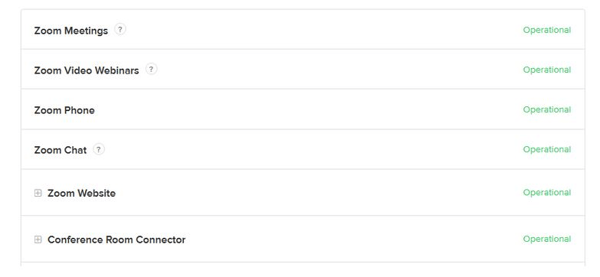
You can see the status of each component, and ideally they should all appear "Operational". However, but you may see "Degraded Performance" or "Under Maintenance", so if this is the case, scroll further down to see additional information about issues, as well as updates and estimated resolution times. .
2.Check for Zoom updates
Zoom usually issues notifications about updates, however it's always a good idea to check manually. Click your profile picture in the top-right, then click Check for Updates. If an update is available, it will download, after which you need to click Update to install it. Zoom will automatically restart when it's done. If you encounter any further problems, you may need to download the latest version of Zoom from the Zoom Download Center.
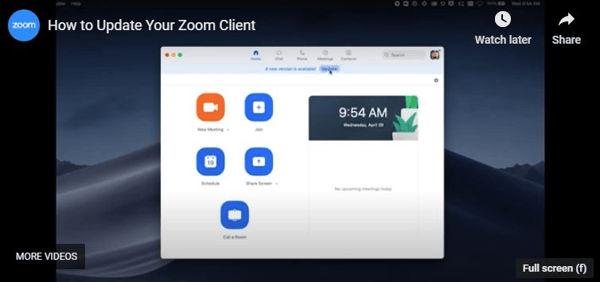
3.Where possible use the desktop client
You have the option of joining a Zoom meeting, via your browser or by using the desktop client. The downloadable client is preferable, as it's faster, far more reliable and supports many more features. However, if you use a computer that doesn't allow the installation of programs, you may have no choice but to use the web version to join your Zoom call.
4.Check your internet connection
Sometimes it's your internet connection that can make the difference between a great meeting and one fraught with problems. If you're relying on WiFi, make sure that everything is in working order before starting the meeting. Take the time to disconnect and reconnect, as well as checking the signal strength prior to a meeting. Speedtest.net allows you to check your results against Zoom's system requirements.
5.Check your speaker and microphone
In Zoom's settings you can check your audio before you start, and this could save you encountering issues once you join a Zoom meeting. You can also access more in-depth settings related to background noise suppression and echo cancellation by clicking on the 'Advanced' button at the bottom of the screen.
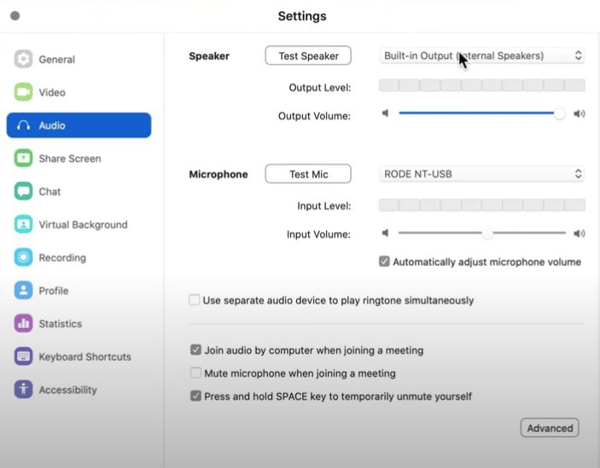
5.Check your video
First make sure you've allowed Zoom to access your camera. If this is your first time joining a Zoom meeting from your chosen device, you'll be asked to allow Zoom permission to access your camera and microphone. Then you can fine-tune your video settings. In Zoom's settings, click on 'Video'. Check the lighting and composition to make sure your webcam is positioned at the best angle, and there is no glare on the screen.
If you plan to use Zoom's virtual background feature, check that this works properly before you join a meeting.
Do Unified Communication and Collaboration applications solve the problems they promise?
Troubleshooting specific Zoom problems
Preliminary checks completed, there are still problems that can occur when you join a Zoom video meeting. For example you may not be able to share your screen, you may encounter an audio problem, or video issues where you or other participants may not be able to see each other. You could have trouble screen sharing, or file sharing, or be experiencing an unstable connection. Here are some of the Zoom meeting problems most experienced by users, and how to combat them.
Unable to share a screen: Check Zoom Meeting Host Controls
A Zoom host controls allow a meeting organizer to control much of the activity in meeting. For example, a host can restrict or allow participants to share a screen, and can even mute users. This could be a problem if they haven’t configured their settings properly. If a meeting participant who is not a host is unable to share a screen, the host should go to the bottom arrow next to screen sharing and select “Advanced Sharing Options.” Here, the host can permit sharing for all participants.
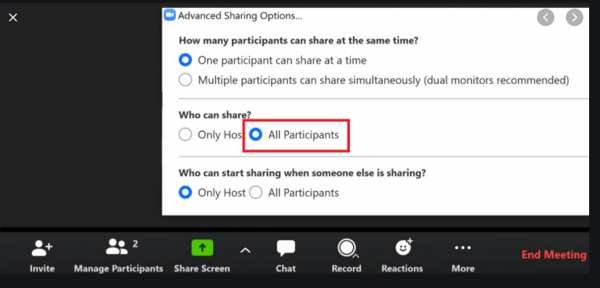
Camera or audio not functioning
If you've already checked your audio and video before starting your Zoom meeting, there could be other reasons why your webcam or audio is not functioning. Try these troubleshooting solutions:
1.Make sure the following settings are not checked so that you can join a call with your audio and video automatically enabled.
- Do Not Connect to Audio
- Turn Off My Video
2.Exit other related apps
If your webcam isn’t showing up, or your video is of poor quality, make sure all other programs that use the webcam are closed. Zoom may not be able to use the camera if it’s currently accessed by a different application.
3.Reinstall Zoom.
If you've tried everything, then a last resort is to download Zoom again and reinstall it.
Echoes during a Zoom call
Audio echo and feedback are common problems during Zoom calls. Try these solutions:
1.Limit the input
If someone has both computer and telephone audio active at the same time, ask them to either disconnect the telephone call or exit PC-based audio during the conference by clicking the Up arrow next to the microphone icon and choosing Leave Computer Audio.
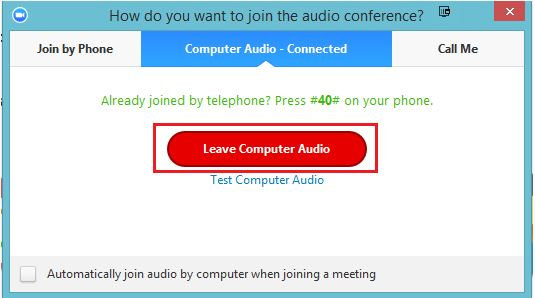
2. Try moving external speakers
Sometimes two people may Computer or telephone speakers might be too close to each other. Ask the two people that are too close to each other to move apart or ask one of them to leave the audio meeting or mute audio on their device. For a more in-depth look at widespread Zoom audio issues, click here.
Zoom lagging or freezing during a meeting
Lagging and freezing is usually an internet connection issue. Here are some some possible fixes:
1. Try a different connection
If you're experiencing bad video connection during a Zoom call on a mobile device, try moving to an area with a better connection. If you're on a desktop computer, if possible use a wired Ethernet connection. Moving closer to a local router may also help, and if possible use the faster 5GHz connection.
2. Check the connection speed
Zoom meetings typically involve many participants, and when a meeting has multiple people in a team setting, you should aim for a download speed of around 1Mbps and the upload speed of around 800Kbps.
3. Adjust Zoom settings
Decreasing the amount of bandwidth you're using can help with video lag or freeze during Zoom meetings. Try unchecking the Enable HD and Touch Up My Appearance options on the Video panel in Settings. The main aim is to reduce graphics-intensive tasks by turning off every feature that you don’t need.
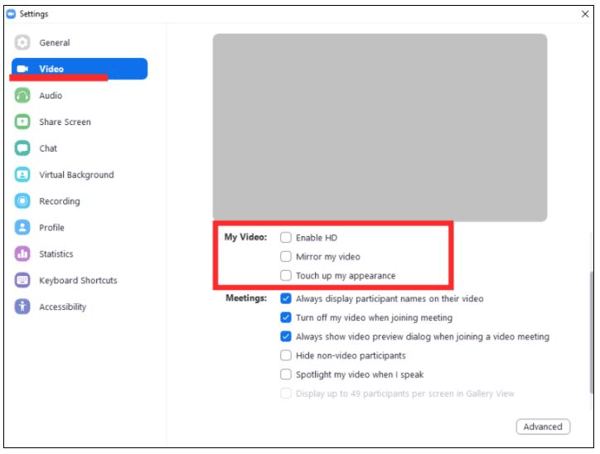
Why monitoring Zoom is vital
Zoom is a boon to organizations, with all its diversity and the flexibility of being able to interact with other communications apps. But working successfully with any UC collaboration tool like Zoom is dependent on continual monitoring of its performance. Without monitoring, you can experience the common Zoom problems we've covered here, such as poor video and call quality, service and security issues, connectivity problems during meetings and much more.
Zoom's out-of-the-box performance management tools won't work in the multi-vendor environment that most enterprises face. Zoom call availability extends across multiple user devices in the office and remotely, including laptops, smart phones and mobile devices, desk phones, soft phones, video clients, USB, and audio devices and much more.
IR Collaborate experience management solution for Zoom is designed to ensure a consistent, positive user experience with a higher rate of uptime and connectivity status. This results in better security, faster problem resolution and consistent end user satisfaction.
You need to proactively identify and address issues with calls as they occur, pinpoint the exact location(s), no matter what the device and jump straight into remediation, as well as predict the likelihood of such issues recurring. However, when your UC environment consists of Zoom for collaboration, plus multiple other vendors, multiple apps and countless remote devices, monitoring tools become even more important to help keep track of all the information and see the whole picture in real time.
Consistent monitoring will also help free up IT teams to concentrate on more important issues, by providing proactive solutions, rather than taking reactive measures.






